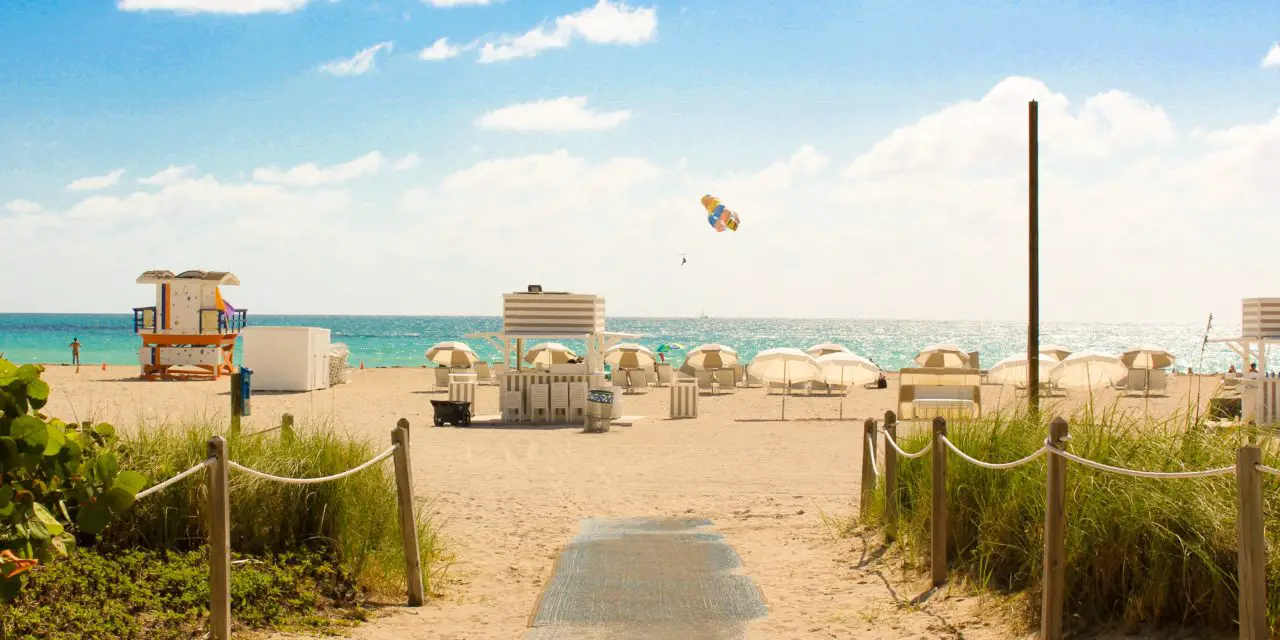Florida is one of the most popular summer vacation destinations in the United States. But, it is not uncommon to experience one or two rainstorms during your stay. If you are curious about the best time to go to Florida to avoid rain, you may wonder, “when does it rain the least in Florida?”
Florida’s driest months typically range from the middle of October to early May. While the changing temperatures of summer often bring on severe thunderstorms and droves of rain, Florida’s winter and spring months tend to be milder. Most rain in Florida comes from June through September.
Below, we’ll discuss everything you need to know about the rain patterns in Florida. Keep reading to ensure you stay prepared for the weather ahead!
What Months Does it Rain the Least in Florida?
Many people enjoy spending their summers in this sunny state, an American hub for subtropical relaxation.
Generally, however, it rains the least in Florida between October and May.
Florida is separated into several regions and two varying climate zones.
While much of Florida experiences similar weather, the location you want to travel to can affect which weather patterns you’ll experience.
In terms of statewide averages, Florida’s rainy season typically runs from June to mid-October. January, February, and March are the driest of all months.
You can expect the least rain in Florida from January to March. This is because, during this time, Florida is less humid, less prone to hurricanes, and experiences an overall milder climate than the typical subtropical conditions.
When Does It Rain the Most in Florida?
It may be a challenging reality to face, but most of Florida’s rain happens in the summer.
While Florida’s rainy season spans roughly from June to mid-October, precipitation is most heavily present from June to August. Once the heaviest rainfall passes, you are still likely to experience regularly scattered showers in September.
What Are Florida’s Climate Zones?
Florida is generally separated into two climate zones: humid subtropical and tropical.
Annually, it is the second-wettest state in the nation.
The table below will highlight which areas of the state are considered humid subtropical and which are considered tropical.
| Climate | Location | Dry Season | Wet Season | Severe Weather Season |
| Humid Subtropical | Northwest, North, and Central Florida | Mid-October to late May | July to September | May to July |
| Tropical | South Florida | December to mid-May | May to October | May and June |
Florida’s Northwest region, particularly the panhandle, also experiences a wet season during the winter.
However, the amounts do not compare to Florida’s summers.
South Florida receives a bit more rainfall than the rest of the state.
However, popular vacation spots still get plenty of rain, especially in the summer.
Why Does it Rain So Much on the Florida Coast?
Florida experiences more thunderstorms annually than any other state in the nation.
As a peninsula, most of Florida is completely surrounded by water. Because of its coastal location, thunderstorms resulting from hurricanes and increased coastal winds run rampant.
The ocean has a large effect on rain in this water-encased state.
From the Gulf of Mexico to as far south as Miami, you are likely to experience at least one intense thunderstorm during your stay in Florida during the summer.
Still, many tourists reserve their vacation days in exchange for Florida’s subtropical climate and bear the storms in hopes of clear skies later in the day.
Is a Summer Vacation in Florida Worth It?
As long as you know that Florida summers tend to be rainy, your summer vacation in this state is still absolutely worth it. However, If rain is one of your biggest concerns during vacation, consider planning your trip to Florida during winter.
Florida’s dry months still maintain mild to warm temperatures, but you may not be able to get that summer tan you are looking for.
Best Places to Visit in Florida
Although there are intense amounts of rain in Florida, the summer sun and warm winter temperatures entice travelers from all over.
If you’ve never vacationed in Florida before, or if you’re looking for a new city to visit, you may be wondering about the best places in Florida to visit.
Just a few of the great vacation spots in Florida include:
- Destin
- Tampa
- Orlando
- Clearwater Beach
From the panhandle to as far south as the Florida Keys, Florida is not lacking in its various adventures.
And, for those rainy days, there are plenty of shops, museums, and other indoor activities to choose from.
Final Thoughts
Florida’s summers are the rainiest times of the year.
However, Most places you go in Florida will not pose too much of a threat of rain from late September to late April.
This makes visiting during these months ideal for those looking to avoid foul weather.
If you do travel to Florida in the summer, you might consider visiting in the later summer months to avoid the onset of severe weather just after the dry season.





